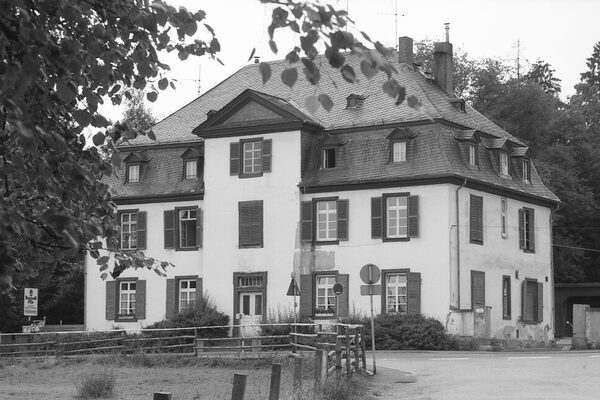Pheasantry, animal and plant park
The history of the Fasanerie animal and plant park dates back to 1744, when Prince Karl zu Nassau-Usingen had a pheasant farm built here for hunting purposes. Between 1744 and 1749, the manor or hunting lodge, which still exists today, and various outbuildings were built. The princely Nassau master builder Friedrich Joachim Stengel was commissioned to draw up the building plans. The buildings were designed in a simple Baroque style, but gradually fell into disrepair after Prince Karl-Wilhelm zu Nassau-Usingen had a hunting lodge built on the Platte near Wiesbaden in 1777.
From 1815, the pheasantry served as a "planting garden" for the cultivation of trees intended for replanting and new cultivation in the forests of the Idstein forest district. In 1844, Wiesbaden medical councillor Wilhelm Zais drew attention to the fact that the pheasantry could serve as an excursion destination for the up-and-coming spa town. Drinks and snacks had been available here since 1834. Walks to the pheasantry became increasingly popular, and a guidebook recommended several routes there in 1868. In the same year, the pheasantry was added to the newly created Prussian forest district of Wiesbaden. On August 26, 1869, the first Wiesbaden horse race was held on the wide area between Klarenthal and the Fasanerie. The second race in 1871 was attended by the future King Edward VII of Great Britain. In 1875, experiments began with the planting of exotic timber. The grounds remained a popular excursion destination; the bar also continued to operate. However, the park was only open to the public with restrictions. This ultimately led to the purchase of the site by the city of Wiesbaden. The contract was signed on 01.07.1912. After the First World War, the pheasantry was used for agricultural purposes. Awareness of the value of the tree population soon awoke: In June 1935, the Nassau Society for Natural History laid out a nature trail that ended at the pheasantry; the exotic trees were provided with plaques "pointing out the special nature of the respective plant". The association also made efforts to have the pheasantry declared a nature reserve. Damaged in a bombing raid during the Second World War, the house and stables were not restored until 1950.
The Wiesbaden Kur- und Verkehrsverein then provided the impetus for the establishment of the zoo. In 1954, the city council decided to convert the completely overgrown area into an animal and plant park. The new animal and plant park was opened on 31.03.1955, the Day of the Tree. The "Förderverein Fasanerie Wiesbaden e.V." has been in existence since 1995. Its aim is to maintain an attractive recreational and leisure area where people can experience around 250 wild and domestic animals as "close to nature" as possible.
Literature
Büttner, Ingeborg; Kilian, Ulla: Der Tier- und Pflanzenpark Fasanerie in Wiesbaden, Wiesbaden 1980.
FAZ, 07.10.2005.
Animal and Plant Park Fasanerie Wiesbaden. History of the park from pheasant breeding to nature education center. Edited by: Tier- und Pflanzenpark Fasanerie, Naturpädagogisches Zentrum, Wiesbaden 2005.
